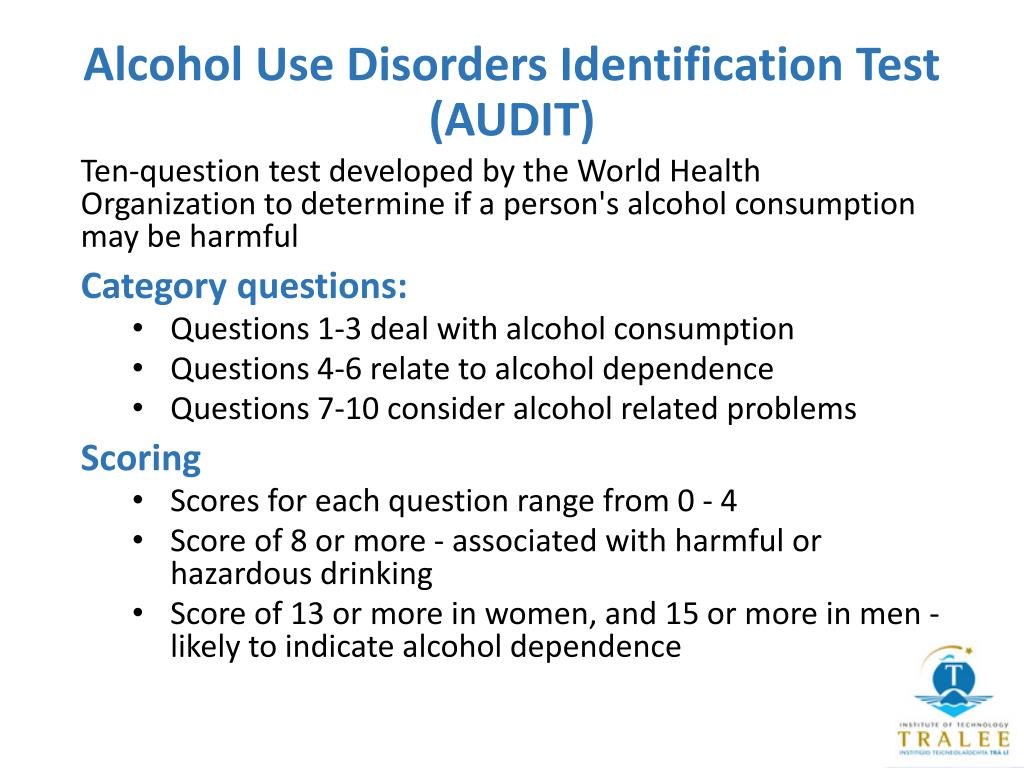

At initial interview, subjects were assessed using a detailed interview including the AUDIT questions and laboratory tests. The study examined the AUDIT™ ability to predict alcohol–related illness and social problems, hospital admission and mortality over a 2–3–year period. Predictive capacity of the AUDIT questionnaire for alcohol related harm. We conclude that the recommended cut-off score of eight is a reasonable approximation to the optimal for a variety of endpoints.Ĭonigrave, K.

Higher cut-offs (12 and 22) provided better discrimination in the prediction of alcohol-related social problems and of liver disease or gastrointestinal bleeding, but high specificity was offset by reduced sensitivity. Cut-off points of 7-8 maximized discrimination in the prediction of trauma and hypertension. AUDIT was a good predictor of both alcohol-related social and medical problems. After 2-3 years, subjects were reviewed, and their experience of alcohol-related medical and social harm assessed by interview and perusal of medical records. Subjects were interviewed using a detailed assessment schedule which included the AUDIT questions. This longitudinal study examined the AUDIT™ performance in predicting alcohol-related harm over the full range of its scores using receiver operating characteristic analyses. Participants - 330 Ambulatory care patients in Sydney, Australia The AUDIT questionnaire: choosing a cut-off score. Only three of 678 non-drinkers (0.5%) had a score of 8 or more.Ĭonigrave, K. Of the alcoholics, 99% had a score of 8 or more, 98% had a score of 10 or more and when those who were currently abstinent were excluded, all scored 10 or more. The validity of AUDIT was then determined among the external reference groups of known alcoholics and non-drinkers. The corresponding specificity was 81% to 98%, with an overall value of 94%. The overall sensitivity for hazardous and harmful alcohol use was 87% to 96%, with an overall value of 92%. Participants - 1888 persons attending representative primary health care facilities in Australia, Bulgaria, Kenya, Mexico, Norway and the USA.Īmong those diagnosed as having hazardous or harmful alcohol use, 92% had an AUDIT score of 8 or more, and 94% of those with non-hazardous consumption had a score of less than 8.The sensitivity of AUDIT for hazardous alcohol consumption ranged from 95% to 100%, for abnormal drinking behavior from 93% to 100%, for the alcohol dependence syndrome it was 100%, and for "alcohol problems in the last year" it ranged from 91% to 100%. Development of the Alcohol Use Disorders Identification Test (AUDIT): WHO collaborative project on early detection of persons with harmful alcohol consumption-II.


 0 kommentar(er)
0 kommentar(er)
